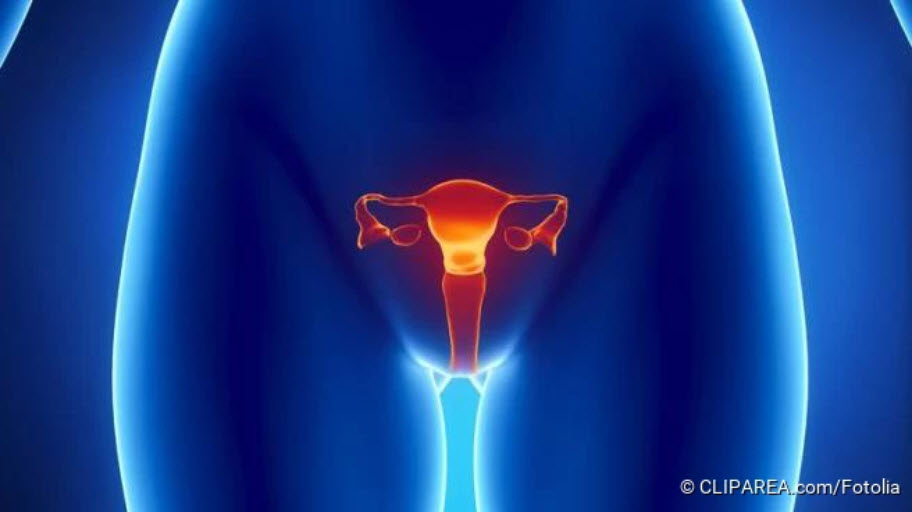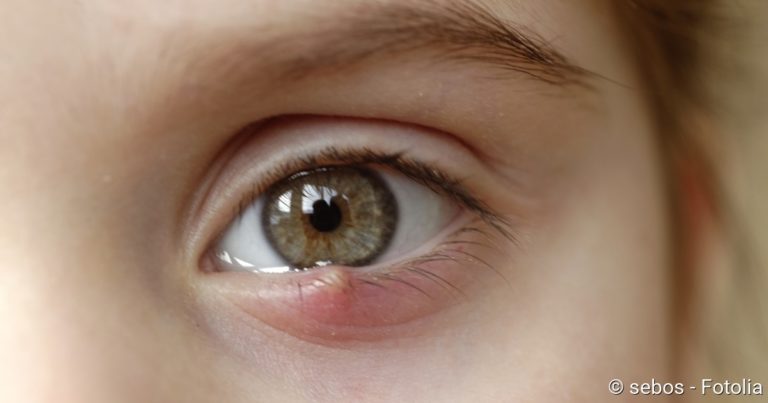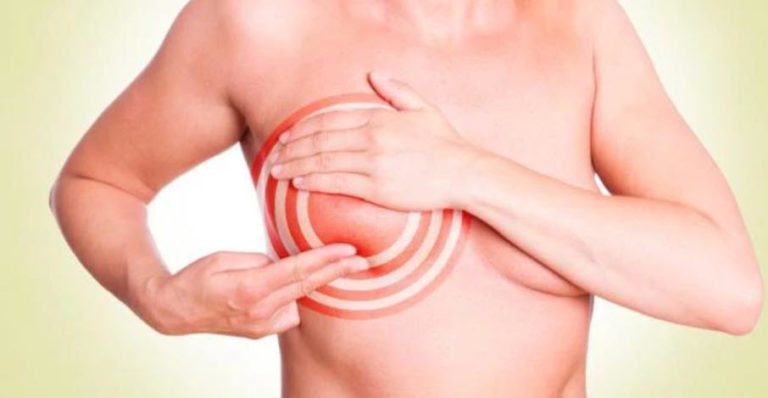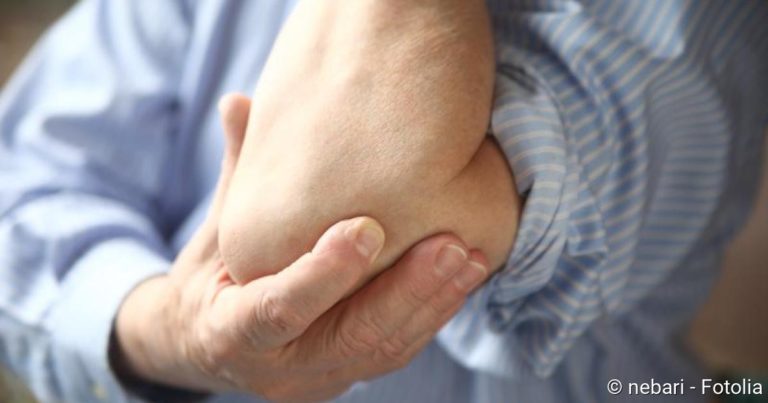Ovarian cyst: causes, treatment, prognosis
Ovarian cyst: causes, treatment, prognosis
A cyst on the ovary (ovarian cyst) is a cavity on the ovaries that is partially filled with fluid or tissue. An ovarian cyst is either congenital or develops under certain conditions. Most ovarian cysts do not cause any discomfort and regress on their own. Here you can read all about the causes and treatment of a cyst on the ovary.

Cyst on the ovary: Description
A cyst on the ovary is a type of bladder that can be filled with tissue or fluid. It is usually only a few millimetres to centimetres in size and causes no discomfort. It is often only discovered by chance during a preventive ultrasound examination. Most frequently, such cysts develop during puberty or during menopause, as strong hormonal fluctuations can occur here, which promote the growth of a cyst.
Non-congenital ovarian cysts
Most ovarian cysts do not develop until the age of sexual maturity. They are also called “functional” cysts. As they are mainly produced under the influence of hormones, they usually occur during the female cycle. However, women in puberty and menopause are particularly frequently affected, as the hormone balance undergoes changes during this time. In some cases, the cysts can also occur as a side effect of hormone therapy or in the case of disease-related disorders of hormone balance. A distinction is made between various functional ovarian cysts: follicular cysts, corpus luteum cysts, chocolate cysts and the polycystic ovaries.
Congenital cysts
The gonad cells of the ovaries produce sex and sex hormones (estrogens and progesterone). If a glandular duct is blocked or misplaced and the glandular fluid backs up, a cyst develops. This process takes place during embryonic development. The cyst is then called “congenital”. Congenital cysts include dermoid cysts and parovarial cysts (cysts of the parental ovary). They are much rarer than the functional cysts.
Cyst on the ovary: symptoms
Read all the important information about the signs of the disease in the article Ovarian cyst – symptoms.
Cyst on the ovary: causes and risk factors
While the congenital ovarian cysts are caused by displaced gonads, the acquired cysts develop under hormonal influence. A distinction is made between different types of cysts.
Corpus luteum cyst
After ovulation, the tissue of the ovary in which the egg has grown – the follicle – transforms into the so-called corpus luteum. This produces the sex hormones estrogen and progesterone. If the egg is fertilised, the corpus luteum initially remains in place during pregnancy. If the egg is not fertilised, the corpus luteum is broken down and menstrual bleeding occurs as the hormone concentrations in the blood fall.
However, if the corpus luteum has not been properly degraded or even continues to grow, one or more cysts are formed. They can also be caused by bleeding into the corpus luteum. Corpus luteum cysts can grow up to eight centimetres in size. In most cases they regress independently after some time.
Ovarian follicle cyst
During the first half of the menstrual cycle, an egg cell matures in a follicle of the ovary. The follicle contains fluid to protect the egg. When ovulation occurs, the follicle bursts and the egg reaches the fallopian tube where it can be fertilised. If ovulation does not occur, the follicle continues to produce fluid. A follicle cyst is formed. Especially women of childbearing age are affected by these cysts. The follicular cyst exists for about four to eight weeks and continues to produce hormones. In most cases, it eventually recedes of its own accord.
Chocolate cysts
Endometriosis is a disease in which the lining of the uterus (endometrium) is located outside the uterus. The endometriosis tissue reacts to the cyclical hormone fluctuations in the same way as the normal endometrium. It builds up, bleeds and rebuilds. However, if the blood cannot drain off properly due to a localization at the ovary, blood-filled cysts can form. These cysts are then also called “chocolate cysts” because of their thickened, dark-blooded contents.
Polycystic ovaries
In polycystic ovaries there are many small cysts in the ovaries. The numerous cysts are caused by a hormonal imbalance. The cause is thought to be an excess of male sex hormones and insulin, which prevents the normal maturation of the follicles. For example, the body produces too much insulin in the case of obesity or a (latent) diabetes type 2 disease in order to compensate for the cells’ lower sensitivity to the metabolic hormone. This promotes the formation of numerous cysts in the ovaries. The so-called polycystic ovary syndrome can lead not only to infertility and miscarriages, but also to cardiovascular diseases, diabetes mellitus and mental illness.
Dermoid cysts
The so-called dermoid cysts are among the congenital cysts. They are formed from embryonic gonad tissue and may contain hair, sebum, teeth, cartilage and/or bone tissue. The dermoid cysts grow very slowly and can reach a size of up to 25 centimeters. However, malignant degeneration of the cyst in the form of a tumour is found in only about one to two percent of cases.
Parovarial cysts
The parovarian cysts (parovarial cysts) are formed from embryonic tissue and are located next to the actual ovaries. They represent residual tissue from the embryonic development period. The parovarian cysts can have a variable size and may grow on a stem.
Cyst on the ovary: examinations and diagnosis
If an ovarian cyst is suspected, the doctor will first ask about the symptoms and previous diseases. The following questions, among others, can be asked:
- How old are you and at what age did you have your first menstrual period?
- When was your last period?
- Do you have a regular cycle?
- How many days does the bleeding last?
- Have you taken or are you taking any hormone supplements?
- How many pregnancies and births have you had so far?
- Are you known to suffer from endometriosis?
- Are ovarian diseases known in your family?
- Do you want a child?
The doctor will then examine the patient to palpate any (painful) enlargement of the ovaries. Depending on the cause of the cyst, it can be assessed by means of a laparoscopy and removed at the same time.
Particularly in women over 40 years of age, a precise diagnosis of a cyst on the ovary should always be made in order to rule out a malignant event.
Ultrasound examination
The ultrasound examination (sonography) enables the ovaries to be visualised. The doctor can assess the ovaries and surrounding structures with a transducer through the abdominal wall or vagina. In many cases it is already possible to determine the type of cyst by means of an ultrasound examination.
Laparoscopy
For many forms of cysts it is sufficient for the doctor to check the course of the disease by means of ultrasound examinations. However, if sonography makes it necessary to consider the suspicion of a dermoid cyst or an endometriosis cyst, a laparoscopy is usually performed under general anaesthesia. Camera and surgical instruments are introduced into the abdominal cavity through three small incisions in the abdominal wall. The surgeon can thus examine the ovaries from close up, take tissue samples from the cyst or remove them completely.
Cyst on the ovary: treatment
The treatment of the ovarian cyst depends on its type and size. Provided it does not cause any discomfort and is not too large, its growth can be observed for the time being. In more than 90 percent of cases, the cyst recedes on its own. For this purpose, cysts should be observed at regular intervals by the doctor by means of ultrasound and palpation. Sometimes a drug therapy with hormones can lead to a regression of the cysts. In rare cases, however, surgical removal is necessary.
Medication
Ovarian function is suppressed by hormone preparations such as the contraceptive pill. Sometimes the hormones can also inhibit cyst growth or even cause their regression. A substance similar to the male sex hormone is used for the treatment of endometriosis cysts.
Surgical removal of ovarian cysts
Most ovarian cysts are acquired cysts that regress spontaneously and do not require surgery. A surgical procedure to assess or remove the cyst is usually only performed when symptoms or complications arise. In the case of newly occurring cysts after menopause or in the case of cysts that have existed for months, surgical clarification must also be carried out.
Various methods are available for the surgical procedure. The choice of procedure depends on the size of the cyst and its cause. Usually a laparoscopy is performed to examine the cyst and possibly remove it. Only in the case of large cysts does the abdomen have to be opened by an incision.
Therapy of polycystic ovaries
The therapy of polycystic ovary syndrome is based on an existing or non-existing desire to have children. The top priority is to reduce body weight through increased physical activity and a balanced diet. If necessary, the insulin level must be reduced with medication. Furthermore, hormones can be given to regulate ovarian function and counteract the increased production of male sex hormones.
Ovarian cyst: course of disease and prognosis
In over 90 percent of cases, an ovarian cyst heals on its own and causes no discomfort or complications. In very rare cases, however, it can tear or rotate (stem rotation). This can lead to complications.
Rupture of an ovarian cyst
Only in rare cases an ovarian cyst ruptures. Sometimes this can happen during a palpation, but most of the time the cyst ruptures without a particular trigger. Although the process is often painful, for example in the form of a sudden, stabbing pain, it is usually harmless. However, if adjacent vessels also rupture, this can lead to bleeding in the abdomen, which usually has to be treated surgically.
Pedicle rotation of a cyst on the ovary
Large ovarian cysts, such as endometriosis cysts, are in some cases connected to the ovary by a movable vascular stem. Sudden body movements may cause the stalk to rotate and cut off the blood supply to the cyst or surrounding tissue. Depending on where the cyst is located, a lack of blood supply leads to severe pain, nausea, vomiting and sweating. The tissue around the cyst may die and lead to further complications such as peritonitis or blood poisoning.
In most cases, cysts on the ovary do not pose a health risk. However, they can very rarely lead to malignant diseases such as ovarian cancer and should therefore be checked regularly. However, a stem rotation is a dangerous and painful complication. It is possible that after the removal of a cyst, new cysts may form on the ovary.
About this text
This text complies with the requirements of medical literature, medical guidelines and current studies and has been reviewed by medical experts.
ICD codes are internationally valid codes for medical diagnoses. They can be found, for example, in doctor’s letters or on certificates of incapacity to work.





